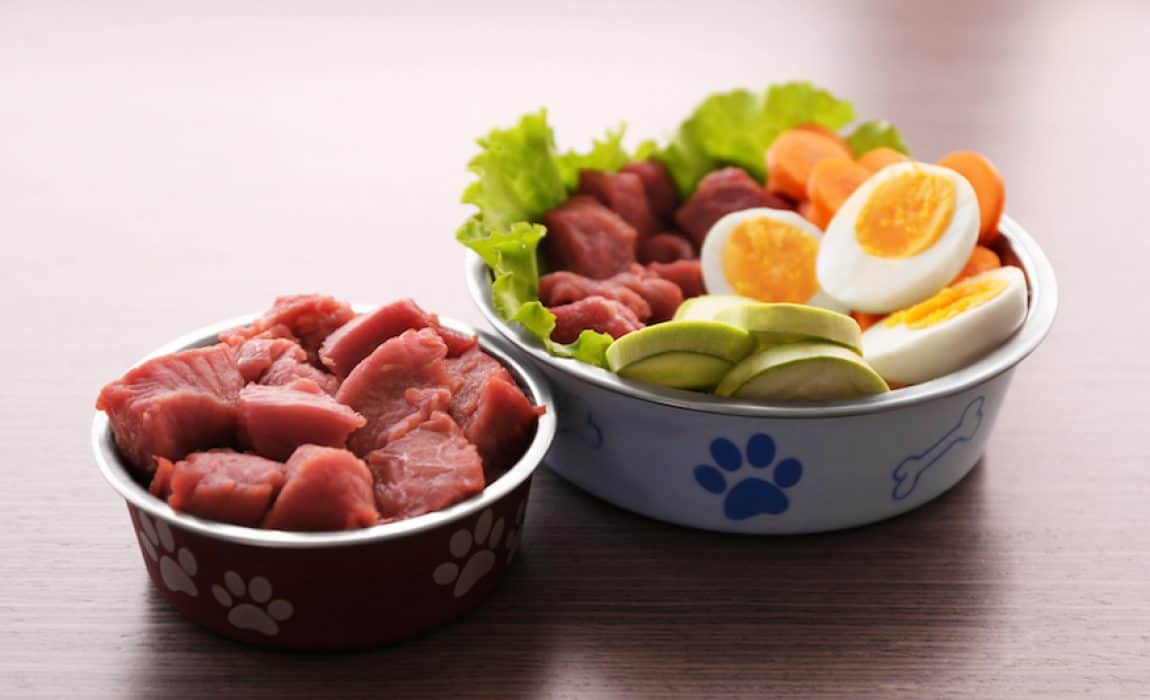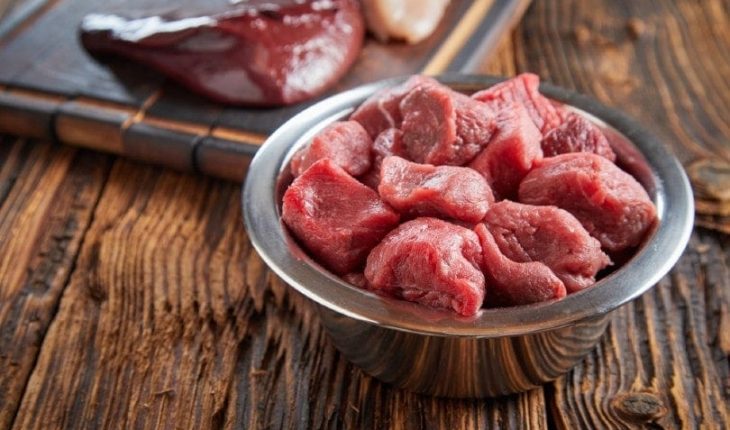Raw pet food provides superior nutrition for pets as a biologically appropriate, minimally processed diet. Raw diets can help with a variety of existing health issues, including obesity, allergies, gastrointestinal diseases and even cancer. Raw diets can also help prevent some diseases, too, including diabetes, kidney disease and cancer.

What is a raw diet and how should a pet owner feed a raw diet? Feeding a balanced raw diet is more complicated that simply filling a dog’s bowl with raw chicken and carrots! In the wild, a dog (or related canine species like a wolf or coyote) would eat a variety of prey animals, including their muscle meat, organs and bones, as well as fur, feathers and vegetable materials in the digestive tract of the prey. Dogs may also scavenge and eat a variety of other found foods if prey is not available. The diversity of this diet helps ensure that the dog has a balanced diet.
Domesticated dogs rely on their humans to provide a balanced diet. That includes the needed amounts of protein and fat and a wide array of vitamins and minerals. Raw food is a very nutritious choice for a dog, but must be balanced and varied. Preparing a homemade raw diet gives the owner the most control over choice and quality of ingredients, but is the most difficult to balance. Homemade raw diets also pose the most risk for both pets and people from raw meat.
Owners preparing a homemade diet should start out by carefully following balanced recipes designed by veterinary nutritionists, including vitamin and mineral supplements. Preparers should take all of the normal precautions when handling and preparing raw meat in order to minimize contamination. Careful attention should be paid to varying the diet to ensure a varied source of amino acids (from meat) and natural vitamins and minerals from fruits, vegetables and grains.
Preparing a homemade balanced diet can be a difficult, expensive and time-consuming task. Luckily, commercially prepared raw diets are available. Three main categories of raw diets for dogs are available at most independent pet stores, while some are even available at large big box pet store chains. A truly raw diet with no processing to kill bacteria is the most difficult to find commercially. These brands essentially replicate a homemade raw diet with attention to balancing muscle meat, bone, organ meat, produce and vitamins/minerals.
These diets are the closest option to a prey model diet that an owner could make at home, but they also carry the same risks of bacterial contamination that homemade diets carry. These diets are often the most affordable options, as they are minimally processed. Many of the truly raw diets that are commercially available are small scale companies and are often local to a specific city or region.
The most common type of raw diets that are commercially are those processed through high pressure pasteurization (HPP). High pressure pasteurization exposes pet foods to significant pressure without heat to kill disease-causing bacteria. The positive outcome of HPP is a bacteria-free product that is safer for both pets and people. However, some raw food advocates point out that HPP is not without its drawbacks. High pressure pasteurization can’t distinguish between “bad” bacteria and “good” bacteria, so all the beneficial bacteria, including probiotics, are also killed. The HPP process also denatures the proteins, changing the flavor and texture of the meat and other ingredients. While the food is still considered raw, HPP changes the food from its natural state.
Some raw food also goes through a fermentation process to make it safer for both pets and humans. Fermentation doesn’t kill the “bad” bacteria, but instead helps proliferate the “good” bacteria to counter the bad. Like high pressure pasteurization, fermentation does not rely on heat to make the product safer, so the food is still technically considered raw. Fermentation does change the texture and taste of the food, and some dogs might not like the taste of the fermented foods.
A raw diet can be a very beneficial choice for many dogs, especially those that are dealing with chronic health issues. Choosing the right raw diet involves weighing cost, convenience and safety. With careful research, most dog owners can find a raw diet that fits their dogs’ needs and their budget and lifestyle.

